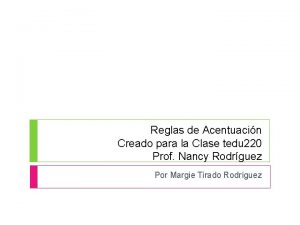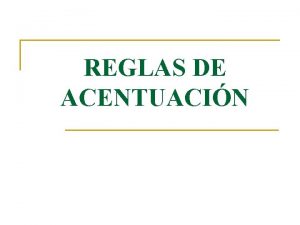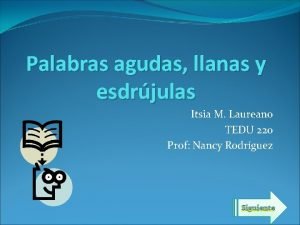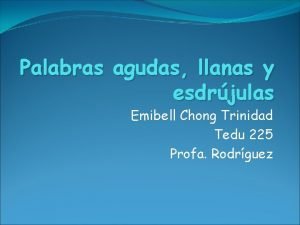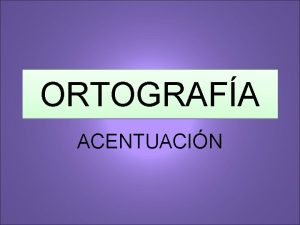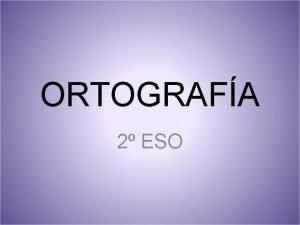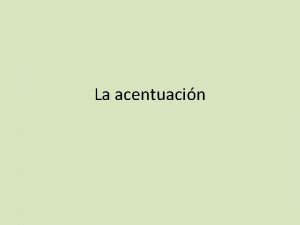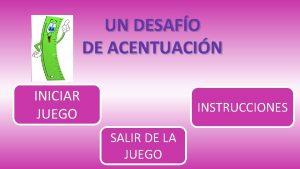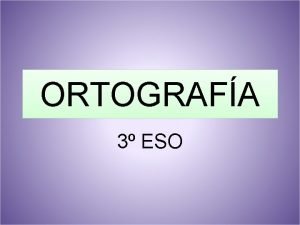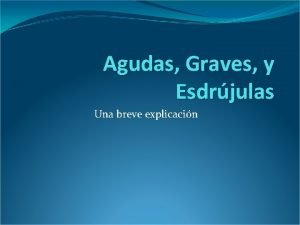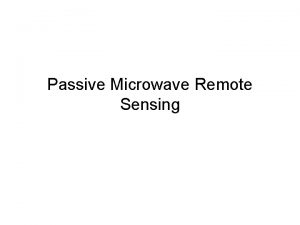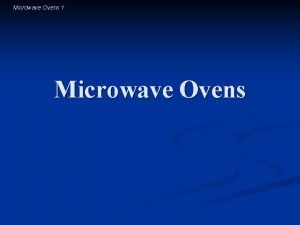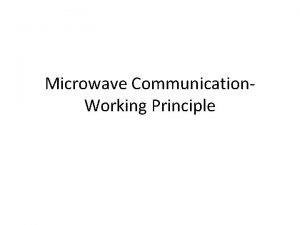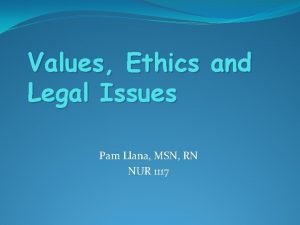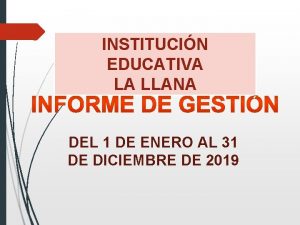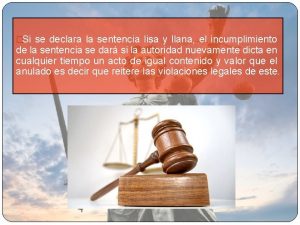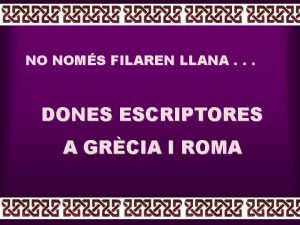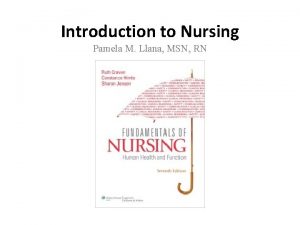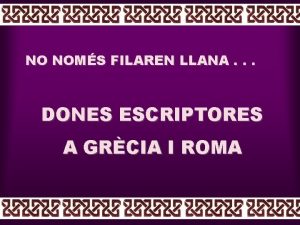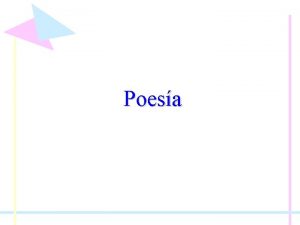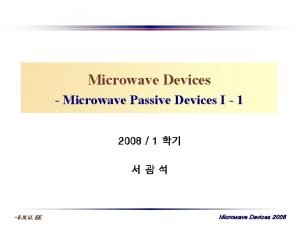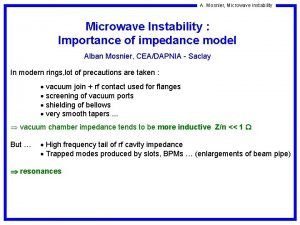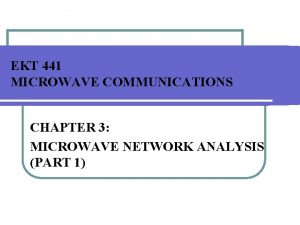Science of the Microwave Patrick de la Llana














- Slides: 14

Science of the Microwave Patrick de la Llana Date: 10/15/12

History/Recap • Discovered in WW 2 by allies for transmitting information. • Waves transmit information by sending out certain frequency, which radio transmitter picks up. • Radio transmitter changes human voice into waves by varying frequency of radio waves in the same pattern as sound waves measured by the microphone. • This process is known as Frequency Modulation (FM).

History/Recap • Varying amplitude of wave is called Amplitude Modulation (AM). • Difference in frequency defines what kind of wave it is.

Waves

Waves •

Microwave Oven • First made by Percy Spencer who was a self taught engineer. • Worked for Raytheon, and discovered use for heating food by working in lab. • Works by passing non-ionizing microwave radiation. • In Electromagnetic spectrum lie between radio and infrared frequencies.

Microwave Oven • Food, water and other things to eat absorb microwaves and heat up by dielectric heating. • Dielectric heating=When radiation heats up a dielectric material. Temperature is raiesd by subjecting material to high frequency electromagnetic field. – Vibrates polarized molecules which heat up food. – Radiation causes dielectric heating.

Parts of Microwave • Control Panel=Allows electric current to flow to transformer. • Transformer and Capacitor=supercharge electricity, and feed electricity to magnetron – Transformer=changes current and/or voltage into desired level. – Capacitor=Stores electricity, but in this case soothes current.

Pictures • Control panel • Inner parts of a Microwave

Magnetron • Empty tube with magnets around it. The copper wire receives electric current from transformer and capacitor. Magnets create magnetic field which make electricity flow out of wire in beams of electrons. • Each time electrons hit edge of wall, they return back in a circulation motion. This results in microwaves – Antenna inside magnetron send out microwaves to waveguide – Basically converts electrical energy to radiation.

Magnetron

Parts of Microwave • Waveguide=Guides microwaves into cooking chamber. Does this by confining the space of the releasing microwaves from the magnetron • Cooking chamber=Chamber that confines the output radiation so that food can get heated up.

Another look at a microwave

Sources • • • http: //www. ccmr. cornell. edu/education/ask/index. html? quid=776 http: //en. wikipedia. org/wiki/Microwave_oven http: //en. wikipedia. org/wiki/Dielectric_heating http: //ffden 2. phys. uaf. edu/212_spring 2005. web. dir/Danielle_Ryder/The%20 Physics% 20 of%20 the%20 Microwave%20 Oven-%20 Home. html http: //en. wikipedia. org/wiki/Dielectric http: //www. britannica. com/EBchecked/topic/162649/dielectric-heating http: //science. discovery. com/tvshows/deconstructed/videos/deconstructed-how-microwave-ovenswork. htm http: //www. nrao. edu/index. php/learn/radioastronomy/radiowaves http: //www. radio-electronics. com/info/antennas/waveguidebasics-tutorial. php
 Talk about your favorite subject
Talk about your favorite subject Sílaba tónica de ferrocarril
Sílaba tónica de ferrocarril La palabra mármol es aguda llana o esdrújula
La palabra mármol es aguda llana o esdrújula Perdon es aguda grave o esdrujula
Perdon es aguda grave o esdrujula Castillo es una palabra aguda grave o esdrujula
Castillo es una palabra aguda grave o esdrujula Aguila aguda grave o esdrujula
Aguila aguda grave o esdrujula Apaciguais es diptongo o hiato
Apaciguais es diptongo o hiato Volar es una palabra aguda grave o esdrujula
Volar es una palabra aguda grave o esdrujula Palabras sobreesdrujulas
Palabras sobreesdrujulas Simpático es aguda grave o esdrújula
Simpático es aguda grave o esdrújula Fragilmente es una palabra aguda grave o esdrujula
Fragilmente es una palabra aguda grave o esdrujula 10 example of word stress
10 example of word stress Silabas tonicas que es
Silabas tonicas que es Hiato y diptongo
Hiato y diptongo Corazon es una palabra esdrújula
Corazon es una palabra esdrújula


